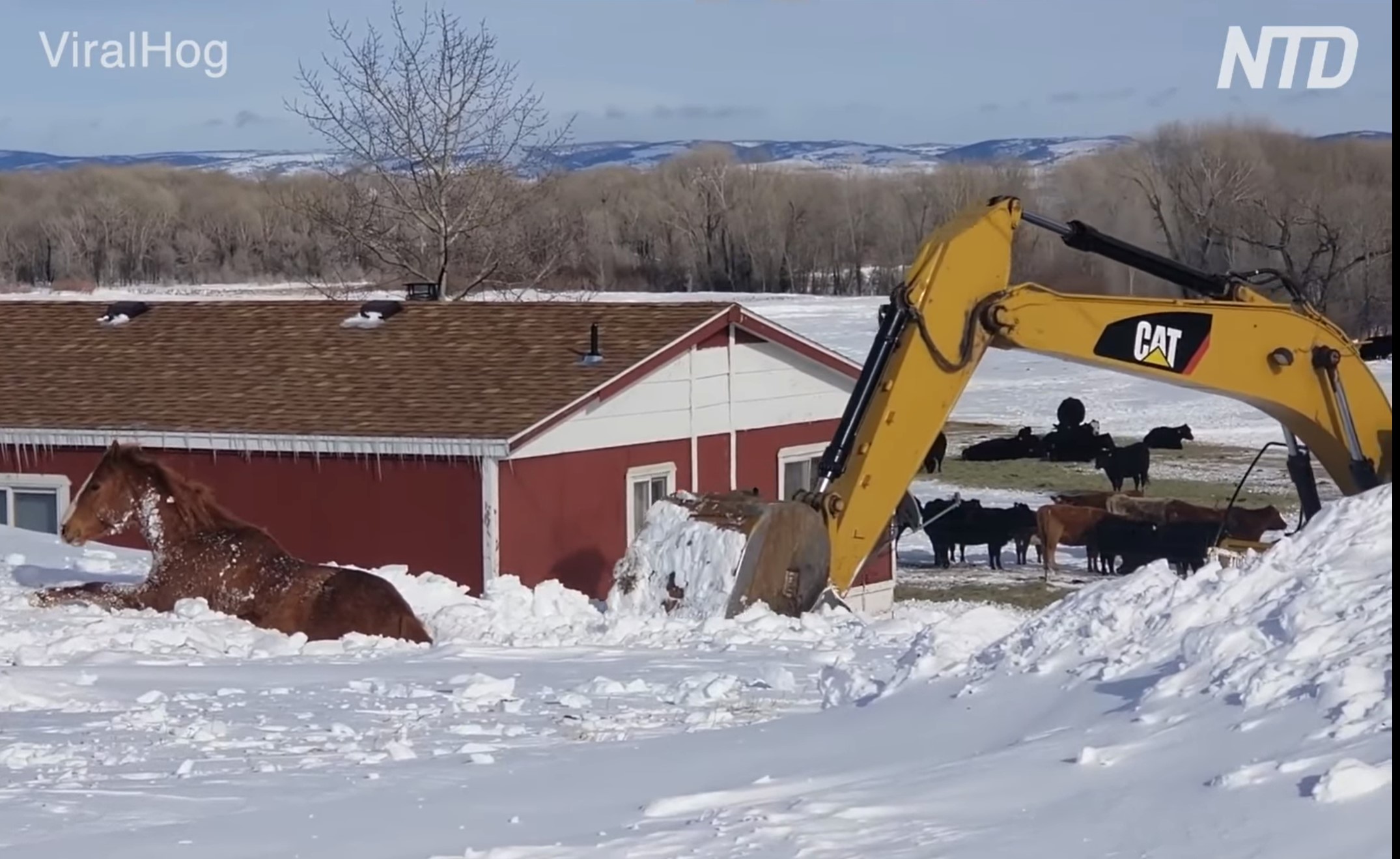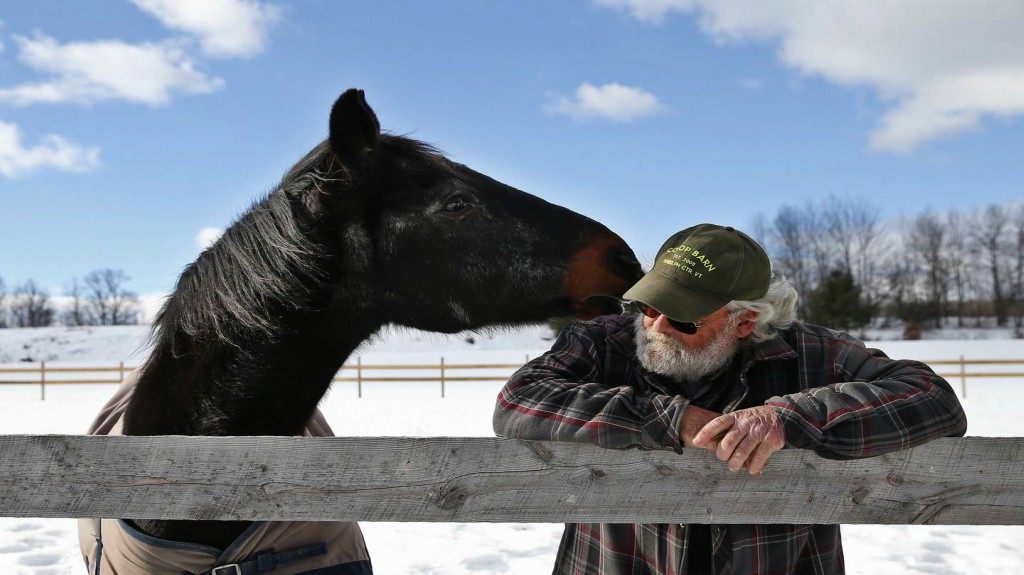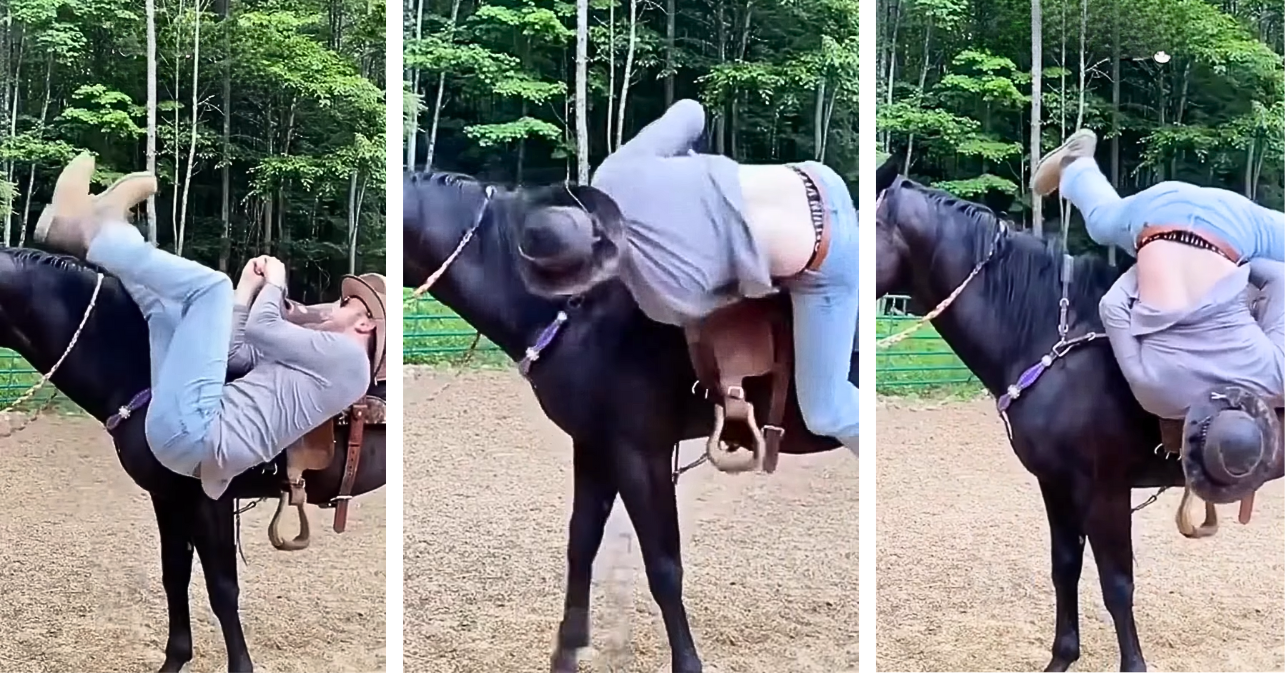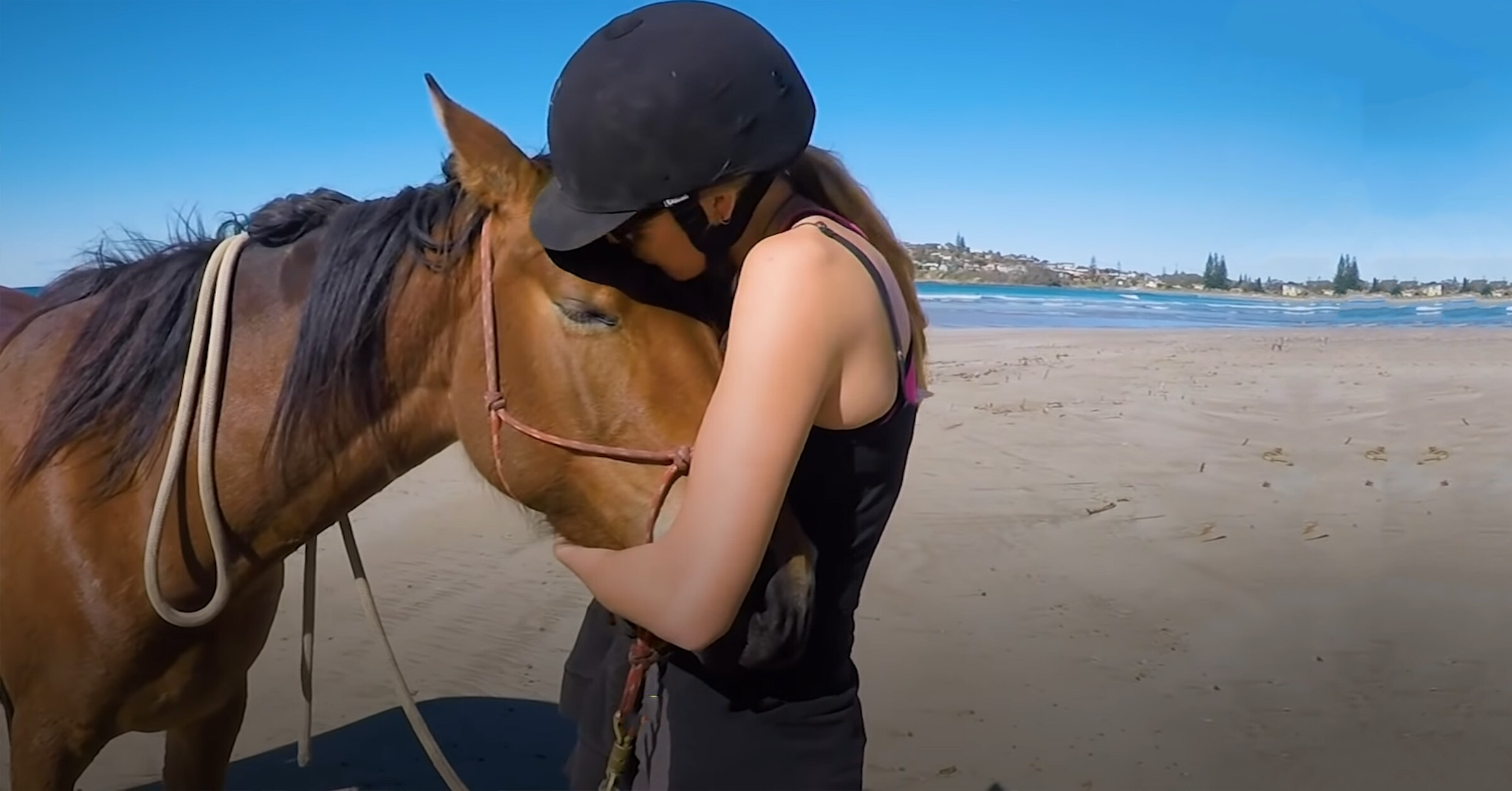Blizzard buried horse is delicately dugout after being stuck in the snow
The horse needs a full mane and tail if he’s spending time outside. Standing with his rump to the wind his tail protects his delicate underparts, and he can lower his head, so it’s shielded from the wind by the rest of his body.
Horses like to play in the snow, as we see in the video, even if they can get in trouble, and it takes rescuers to get it out of the snow. Horses are mammals, and they will inevitably get cold just like the rest of us in harsh winter weather. But you don’t need to keep your horse inside all winter; horses can withstand colder temperatures thanks to their hardy nature.


Oils in the hair coat help it shed moisture. A snowstorm in cold temperatures is comprised of dry snow moisture freezes on the outer surface of the hair coat and never reaches the horse’s skin. The insulating air pockets don’t allow body heat to escape, so the snow on a horse with a normal winter hair coat won’t melt or make him wet.
In cold, wet weather, horses should have a shelter where they can escape the rain or snow. If it’s wet, horses need some trees or an open-sided shed so they can get under them. If there’s no shelter, a waterproof blanket could be useful.

Newborn foals also need protection from the elements, especially when they are still wet after birth. Their circulatory systems are focused on conserving heat and keeping the body core warm (for survival) rather than the extremities. And because a newborn foal has a short hair coat and very little body fat for insulation, he is at high risk for cold stress or frostbite.
Smaller animals have a greater surface area relative to body weight and can lose heat more rapidly than larger animals. A weanling may reach its lower critical temperature before a mature horse. Cold weather can slow growth because calories go from weight gain to temperature maintenance. To lessen a growth slump during cold weather, you should feed additional calories to young horses.

During the summer months, lush pastures contain 60 to 80 percent moisture and can contribute to your horse’s water requirement. In contrast, dried winter feedstuffs such as grain and hay contain less than 15 percent moisture. Thus, your horse will require more water in the winter.
If your horse doesn’t drink enough water during cold weather they may eat less and be more prone to impaction colic. Even if you offer quality feed, horses will consume less if not drinking enough water. If horses eat less food, they might not have enough energy to tolerate the cold.

As temperatures decrease during winter, the horse needs additional dietary energy to maintain its body temperature and condition. The best source of additional dietary energy during the cold winter months is forage. Some believe that feeding more grain will keep a horse warmer. But digestion, absorption, and utilization of grain don’t produce as much heat as the microbial fermentation of forage. More forage increases microbial fermentation and keeps the horse warm.
Related Posts
-
 A Friendship Of A Lifetime: Old Man-Horse Duo Has The Most Beautiful Bond
No Comments | Dec 26, 2020
A Friendship Of A Lifetime: Old Man-Horse Duo Has The Most Beautiful Bond
No Comments | Dec 26, 2020 -
 Hilarious bum pushing game between two giant draft horses
No Comments | Mar 31, 2021
Hilarious bum pushing game between two giant draft horses
No Comments | Mar 31, 2021 -
 This Rider’s Attempt to Mount a Horse Goes Terribly Wrong – Prepare to Laugh Out Loud!
No Comments | May 10, 2023
This Rider’s Attempt to Mount a Horse Goes Terribly Wrong – Prepare to Laugh Out Loud!
No Comments | May 10, 2023 -
 Strong bond between this loyal horse and its sick owner
No Comments | Jun 3, 2021
Strong bond between this loyal horse and its sick owner
No Comments | Jun 3, 2021
